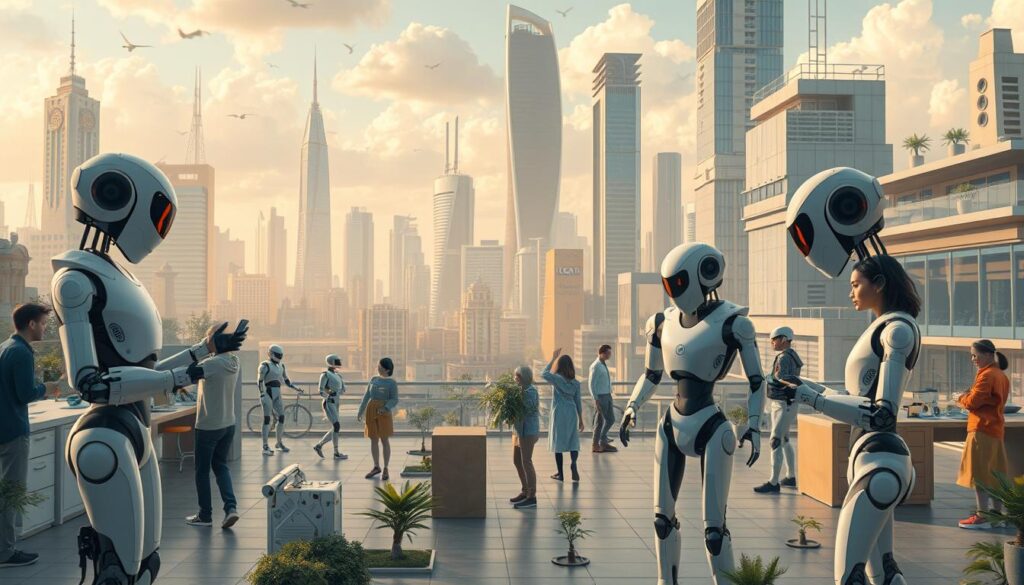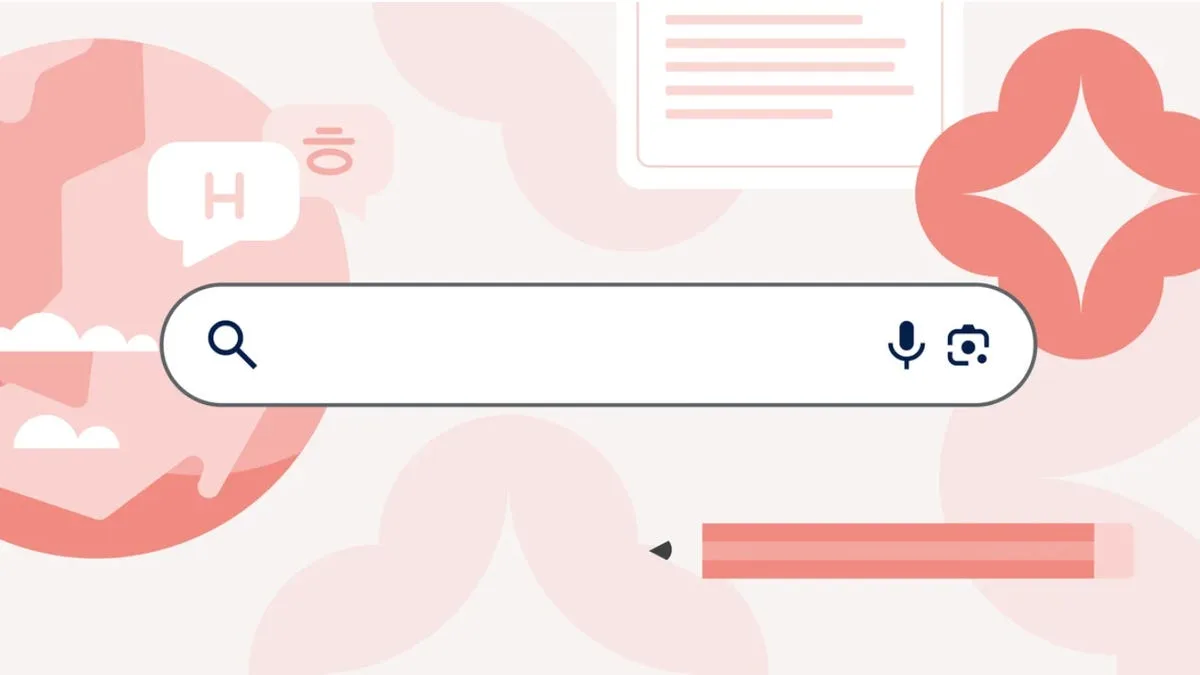A Deloitte report shows that using robots can boost productivity by 20% and cut costs. These machines work non-stop, helping a lot in many areas. They are key in healthcare and farming, making things better and more efficient.
Robots are changing how we work and live. They help us do better, stay safe, and be more precise. Automation is making industries better, helping with hard tasks and dangerous jobs.
This article looks at how AI robots are changing many fields. We’ll see how they’re making healthcare and farming better. We’ll also talk about their bright future in helping humans.
Key Takeaways
- AI robots significantly enhance productivity and reduce costs for businesses.
- They operate continuously, providing consistent support in various sectors.
- Applications in healthcare improve precision and reduce recovery times for patients.
- Robotics in agriculture optimize planting and harvesting processes.
- AI technology is advancing safety in hazardous working environments.
- Robots play an integral role in disaster response and management.
Introduction to AI Robots and Their Role

AI robots mix artificial intelligence with robotics, making machines do tasks that need human smarts. The World Economic Forum says these techs will create 12 million more jobs by 20251. This shows how big AI’s role is in our world, helping automate jobs in many fields.
More people want robots because they can learn and adapt. In 2019, 390,000 industrial robots were working worldwide, mainly in China, Japan, and the U.S2. AI makes work better by making it more efficient. For example, in manufacturing, AI helps robots learn and improve during complex tasks1.
Robotics is a key area for innovation, helping digital changes2. Today’s robots can do about 25% of jobs in hard areas like construction and nursing. But AI will help them do even more2. There’s worry about jobs being lost as AI and robots get better3. So, getting ready for these changes and using AI robots wisely is key to a better future.
Enhancing Workplace Productivity
AI robots are changing how we work, especially in making things. They make things faster and more accurate. This is key in today’s fast-paced world.
Automation in Manufacturing
Companies are quickly adding robots to their factories. For example, Amazon uses over 100,000 robots to help with orders. This shows their big push for making things better and faster4.
FoxConn has over 300,000 robots for making electronics. These robots help cut down on mistakes. This leads to better work and happier workers5. Robots also help workers get better rewards, making them more eager to do their best5.
Investment in AI has jumped to about $190 billion in 2022. This shows more companies want to use automation6.
Collaborative Robots (Cobots)
Cobots are changing how we work together. They work with people, making places safer and more friendly. The market for cobots is growing fast, valued at $1.1 billion and expected to grow more4.
Cobots can move like people, making work better and safer. They help leaders see how well workers are doing. This makes work more rewarding for everyone5.
AI Robots in Hazardous Environments
AI robots in dangerous places are a big step forward in tech. They help keep humans safe. Robots reducing human risk play key roles in many fields, like nuclear power and disaster response.
Reducing Human Risk
AI robots at The University of Manchester are made for tough spots. They can do jobs that are too risky for people7. For example, they work in old nuclear reactors and offshore energy sites safely7.
The goal is to make robots more independent in the nuclear field. This makes decommissioning safer, faster, and cheaper7. The Rhyno Protect robot fights fires where humans would be in danger8. The Aliengo robot can explore rough areas and check on disaster zones, showing robots’ value in risky situations8.
Applications in Nuclear Inspection and Disaster Response
Robots have greatly improved nuclear inspections, thanks to the RAICo program7. This project brings together The University of Manchester, the UK Atomic Energy Agency, and others. They work on making robots for the UK’s Nuclear Decommissioning Authority’s sites7.
In disaster situations, robots are key. Spot is used for inspections in dangerous places, showing its worth8. The RoBoa robot helps find victims and checks out dangerous areas, highlighting robots’ role in emergencies8.
How do AI robots help humans?
AI robots greatly improve our lives, especially in healthcare. They make surgeries more precise, changing how we do operations. For example, the da Vinci Surgical System by Intuitive Surgical has made surgeries less invasive. This means less pain and quicker recovery for patients9.
This technology shows how robots can help doctors do their jobs better. It lets them work with more accuracy during surgeries.
Improving Precision in Medical Surgeries
Surgical robots have made surgeries more effective. They lead to fewer problems and shorter stays in the hospital. This is a big step forward in using AI in healthcare.
As doctors use these robots more, they can give better care. They can achieve amazing results in their work.
Revolutionizing Patient Care
AI robots also play a big role in patient care. They help watch over patients, offer companionship, and improve rehabilitation. For example, Pepper robots provide emotional support to seniors9.
Robots are also helping with physical therapy. This helps people live healthier lives10. These technologies are changing patient care for the better. They help ensure patients get the care they need quickly.
Transforming the Agricultural Sector
The way we farm is changing fast, thanks to AI robots. These tools make farming more efficient. They help farmers meet the world’s growing food needs. By 2050, we’ll need 60% more food for 10 billion people1112.
Automated Planting and Harvesting
Robots are making planting and harvesting easier. Companies like John Deere are leading this change. They help farmers work less and save money on labor, which is a big problem for 55% of farmers13.
Monitoring Crop Health and Yield
AI robots help farmers keep an eye on their crops. They use sensors to check the environment and crop health. This gives farmers the info they need to make better choices, boosting yields by up to 70%1112.
FAQ
What are AI robots and how do they assist humans?
How are AI robots improving productivity in manufacturing?
What is the role of collaborative robots (cobots) in the workplace?
How do AI robots reduce risks in hazardous environments?
What are the applications of robots in nuclear inspection and disaster response?
How have AI robots transformed healthcare?
What advancements are AI robots making in the agricultural sector?
How do AI robots monitor crop health?
Source Links
- Applications of AI in Robots: An Introduction
- What are Robots and How Do They Work?
- AI, Robotics, and the Future of Jobs
- Robots in the Workplace | Michigan Tech Global Campus News
- How Robots Can Enhance Performance Management for Humans
- How Robots and AI Will Impact Productivity, Trade, and Labor | SEADS
- AI-Powered Machines for Hazardous Environments
- AI-powered robots supporting humans amidst natural hazards
- 20 Types of Robots that Help Humans – PROVEN Robotics
- More than machines: Computer scientist prepares robots to improve human lives
- The Future Of Farming: AI Innovations That Are Transforming Agriculture
- AI in Agriculture — The Future of Farming
- Agricultural Robots: Farming Smarter, Not Harder







